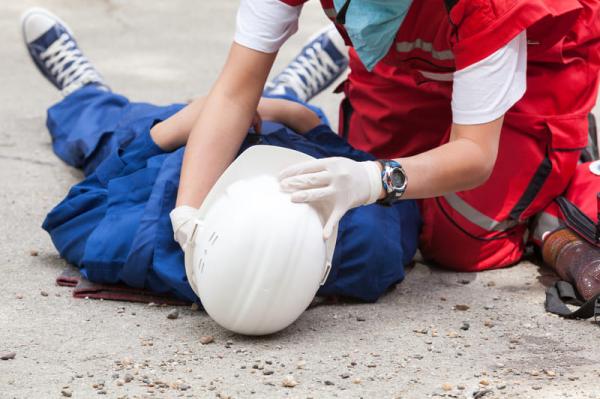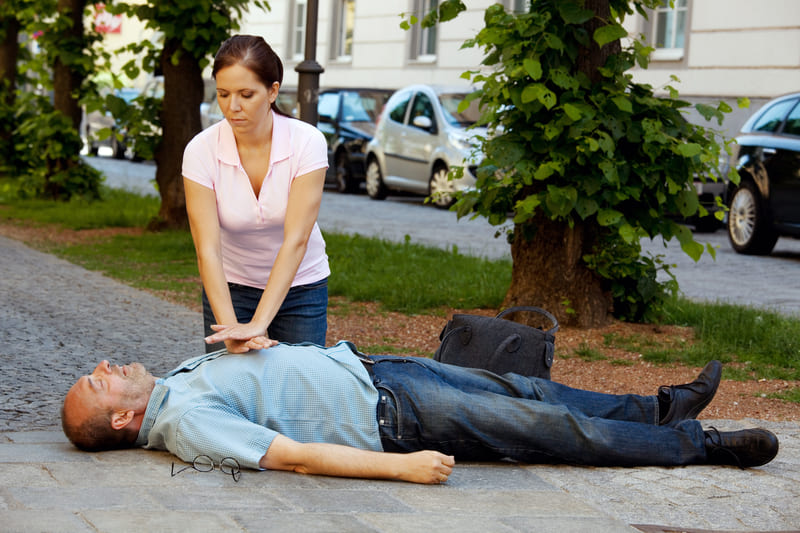Blog Post
First Aid Training: Responding To Allergic Reactions Effectively

If there's one thing you need to prepare you for an emergency allergic reaction, it's first aid training. Like most emergencies, severe allergic reactions, known also as anaphylaxis, can occur without warning, which is why emergency preparedness is so crucial.
Professional health and safety training is at the heart of what we do at EMCARE, which is why we value the importance of first aid. In this article, we'll be exploring the importance of first aid training and how it can prepare you for responding to severe allergic reactions.
What Is Anaphylaxis?
Before we break down how to use your training for anaphylaxis, it's important to know what severe allergic reactions look like and what causes them. When an allergic reaction becomes severe or life-threatening, this is referred to as anaphylaxis. Anaphylaxis can occur due to any exposure to objects or substances that a person is allergic to, like peanuts or bee stings.
Once the body comes into contact with something it's allergic to, the immune system causes the body to go into shock by releasing a flood of chemicals. This can differ from person to person, but typically results in a sudden drop in blood pressure, nausea and vomiting, a weak pulse and staggered breathing.
Unlike a regular allergic reaction, anaphylaxis is incredibly dangerous as it can become fatal in a matter of minutes or seconds. To avoid any life-threatening complications, first aid training is essential for responding to anaphylactic shock.
Signs Of An Allergic Reaction
Our bodies all react differently during an allergic reaction, which is why it is crucial to know how to identify the signs of anaphylaxis as it happens. If you're unsure how to recognise the symptoms of a severe allergic reaction, here are the signs to look out for:
Skin Reactions
A tell-tale sign of an allergic reaction, both regular and severe, is any type of skin reaction. This
can
look different from person to person and appear on any part of the body, but typically show itself in
the
form of hives or rashes.
Swelling
Another common symptom of anaphylaxis is swelling. Look out for swelling of the throat, lips or tongue
when
trying to identify an allergic reaction.
Gastrointestinal Symptoms
If someone is vomiting, nauseous or experiencing diarrhea, this could be the indication of a severe
allergic
reaction.
Fainting Or Dizziness
As mentioned previously, a sudden drop in blood pressure is often a common symptom of anaphylaxis. This
can
also result in fainting or dizziness.
Breathing Complications
Breathing complications are one of the most common signs of a severe allergic reaction. Look out for
shortness of breath or difficulty breathing.

CPR For Allergic Reactions
While not all cases of anaphylaxis lead to breathing difficulties, many of them do. If the person experiencing a severe allergic reaction isn't moving or breathing, you'll need to perform CPR. Doing chest compressions before help arrives could be the difference between life or death depending on the severity of the allergic reaction.
If you want to be better prepared for administering CPR, our comprehensive first aid training courses teach you all there is to know on the basics of CPR. This way, you can perform CPR confidently and safely in case of an emergency.
Steps To Follow When Someone Is Experiencing Anaphylaxis
Time is of the essence when it comes to a severe allergic reaction, which is why it is crucial that you act swiftly to avoid any life-threatening consequences. If you're not sure what to do the next time someone goes into anaphylactic shock, follow these first aid training steps:
Using An EpiPen (Epinephrine)
In many cases, those with severe allergies tend to carry an EpiPen on their person. EpiPens are highly
important during anaphylaxis as they are the primary treatment for those undergoing a severe allergic
reaction. EpiPens not only buy you time until medical professionals arrive at the scene, but they also
help
to reverse some of the effects of an allergic reaction.
During first aid training, you'll learn when and how to use an EpiPen correctly as the proper use of it
is
crucial to ensuring its effectiveness.
Stabilising The Person
Until medical help arrives, you'll need to ensure that the person experiencing anaphylaxis is properly
positioned. During first aid training, you'll learn how to properly lay a person down as well as which
positions you should avoid putting them in.
Monitoring Vital Signals
If someone is experiencing anaphylaxis, you'll need to look out for these 3 vital signs: consciousness,
heart rate and breathing. Depending on how the person is breathing or if they lose consciousness, you
may
need to perform CPR.
Once the person has been stabilised, however, it is essential that you continue monitoring them until medical help arrives. This is because anaphylaxis can also cause a secondary reaction in individuals even hours after the initial allergic reaction.

Sign Up For EMCARE
Whether you want to better prepare yourself for the next time someone goes into anaphylactic shock or be more informed on the basics of health and safety, first aid training is the way to go. Here at EMCARE, our first aid training covers a wide array of courses and modules that teach you essential life-saving skills and techniques.
Available at all levels of first aid, our first aid training courses are led by registered healthcare professionals and are designed to provide you with skills you need to confidently be a first aider. Visit our website and contact us for more information so you can start your first aid training journey today.
GET IN TOUCH
There are a few ways to reach us below. Please feel free to contact us via phone, email or you can send us a message via the form provided and we will get back to you.




















